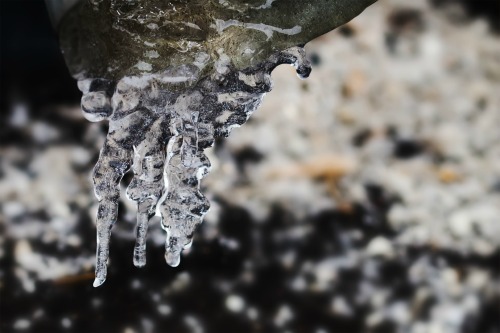As winter approaches and temperatures dip, we need to be more cognizant of our winter preparedness in general. Wrapping your pipes is an easy step to protecting your home and your water supply when it gets cold outside!
Why Wrap Your Water Pipes
Wrapping your pipes is a simple preventative measure that can be taken to prevent frozen and broken pipes that can be timely and costly to fix. Pipes in unheated portions of the house or outside the house can freeze and crack because the water inside them expands. Burst pipes cause expensive leaks that can cost a great deal of money. Pipes in poorly insulated portions of the house are also susceptible to freezing, including attics, basements, and crawl spaces. Don’t forget that all pipes that are on the exterior of the house should be wrapped too, including swimming pool systems, sprinkler systems, and the portion of the pipe that extends from the below-ground line to the house, where typically you attach your garden hose.
How To Properly Wrap Your Pipes For Winter
First, make sure you have the proper tools necessary to protect your pipes. Products to insulate pipes, such as a pipe sleeve and electrical heat tape, can be purchased and placed around pipes to prevent them from freezing. Plastic pipes should only be wrapped with automatic heat tape. This kind of tape is insulated with heavy rubber around its wires.
Count the number of faucets or valves along each pipe. Figure out the length and diameter of each pipe you intend to wrap. These figures can help you determine how much insulation product you will need to buy.
Next, go through your house to check for leaky water pipes. Check all bathroom and kitchen cabinets, the attic, basement, crawl spaces, and garage. Look for pipes running along outside walls of your house or through your foundation as well. Use tools or have a professional licensed plumber repair any leaking pipes or pipe joints before wrapping them!
Once all leaks are repaired and you have purchased the necessary products to wrap the pipes, simply follow any specific directions from the product’s manufacturer to wrap the pipes. Wrap pipes carefully with the insulation product.
Heat tape has a plug at one end to heat a pipe electrically. From the plug end, run the tape straight down the length of the pipe if directed to by the manufacturer. You may need to wrap heat tape in a spiral or corkscrew fashion around a pipe instead. Wrap areas of pipe that go below ground with heat tape until you reach the frost line. Secure the heat tape to the pipe with bands of electrical tape wrapped around the pipe’s diameter. Space the bands of electrical tape according to the heat tape manufacturer’s directions.
The video below can also help you learn how to properly wrap your pipes for winter!
What To Do If A Pipe Has Already Frozen
Cathing a frozen pipe early before it bursts is key! If you notice a pipe has already frozen, you could wrap it with an electric heating pad that you can plug in to warm up and melt the ice. Towels heated with hot water can also allow enough of a thaw for a sufficient amount of water to run through the pipe again.
Consider wrapping your pipes if you can. It could cost you some money upfront, but it will be well worth it if it prevents a pipe from bursting from a freeze!
This article was originally published at Ready Nutrition™ on December 6th, 2021







